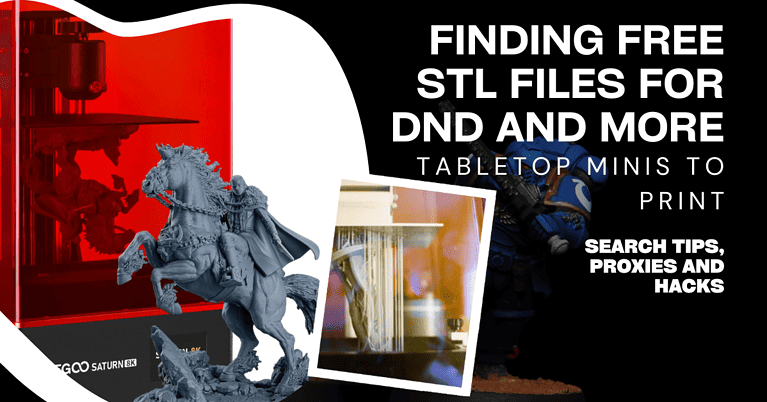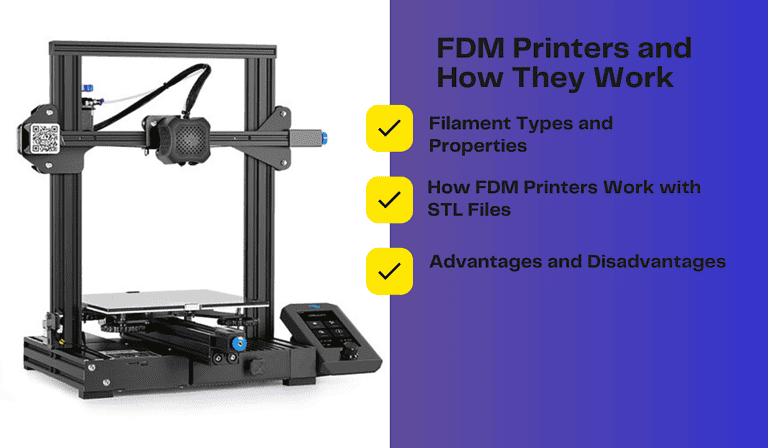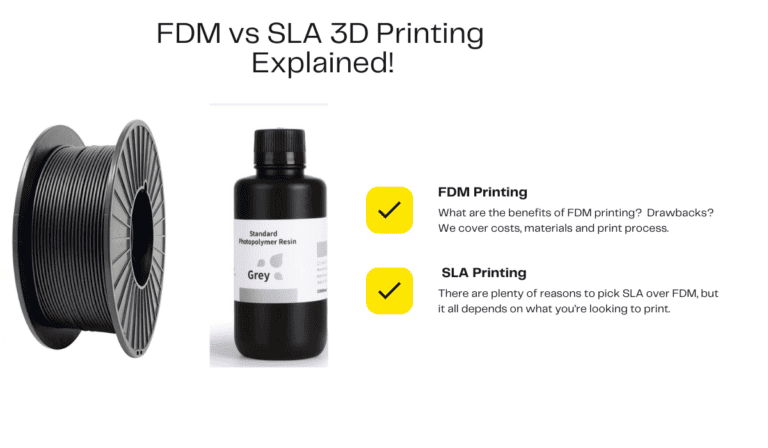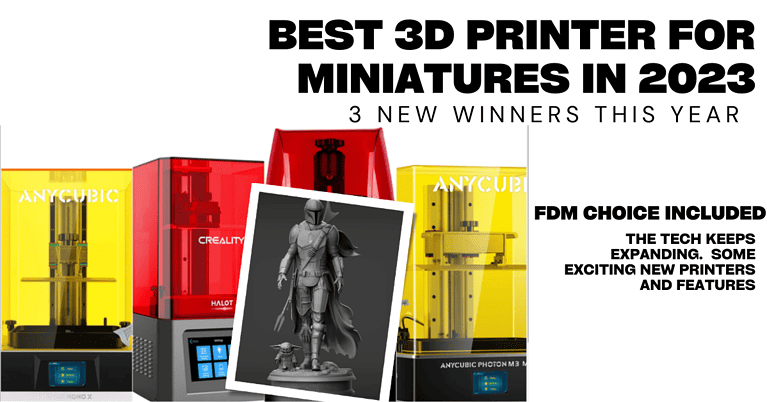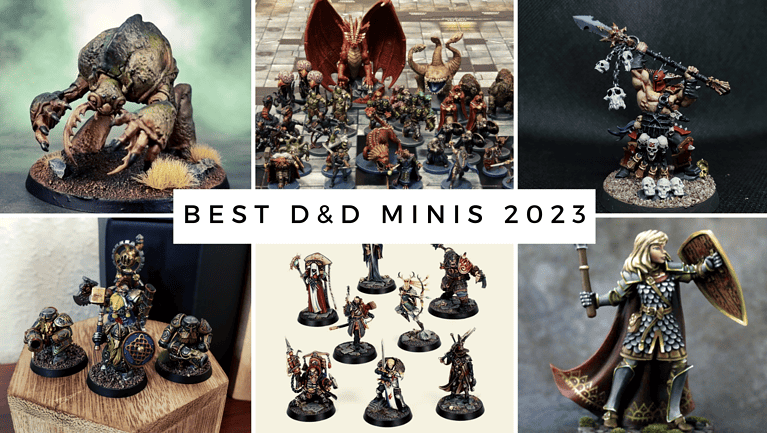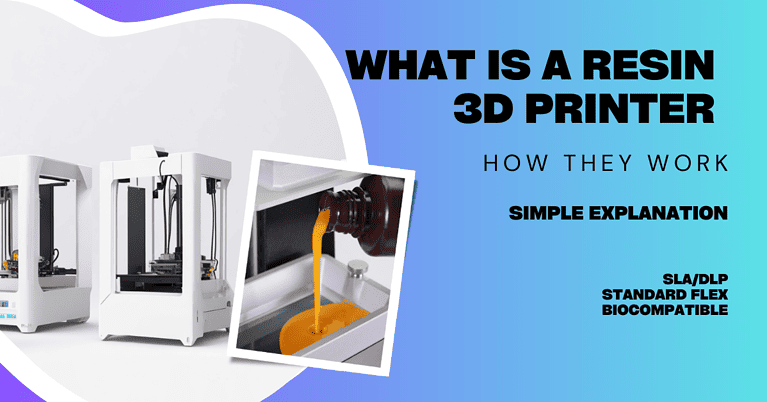The Best Paint for 3d Prints: What to use for Resin, PLA and More
I started out in the miniature painting world before getting into 3D printing. It turns out they both have a lot in common. I frequently have to paint my 3D prints and it was great to already have the skills and tools to do it.
These techniques are not just for miniatures, they apply to any 3D printed object. I’ll let you know your options are, and what I use to paint my 3D prints.
What is the best paint for 3D Prints? The best paints for resin or plastic 3D prints are acrylic based paints. They are non-toxic and quick drying with excellent coverage. Acrylic paints are readily available and typically inexpensive, but quality can vary. For best results use an acrylic primer first, and high quality acrylic paints. You can protect the painted print by using a sealer or varnish.
Let’s go a bit deeper.
What Paints Can I Use for 3D Prints?
Resin and Plastic 3D prints can be painted with almost any type of paint. The biggest considerations are coverage, durability and finish. So for example, why you can paint with watercolors or Gouache paint but the result might be very transparent because they are meant to be less opaque. Gouache is just a mix of watercolor and other pigments for more coverage, but it’s still not as strong as oil or acrylics.
The most commonly used paints for 3D prints are acrylics, enamels, or oil paints. I’ll quickly go through them:
Acrylic paint is a fast-drying, water-based paint that is easy to use and versatile. It can be used on a variety of surfaces, including resin, plastic, and metal. Acrylic paint is also relatively inexpensive. It’s not quite as durable as oil or enamels, but we can always use a sealer or varnish on them.
The other big benefit of Acrylics is they are non-toxic and you only need water to thin them.
Paint brand is important to consider
Oil paint is a slow-drying, oil-based paint that is known for its rich colors and smooth finish. It is a popular choice for artists who want to create detailed paintings with a lot of texture. Oil paint can be difficult to work with, but it is also very durable and long-lasting.
Oils also require mineral spirits and solvents to thin them. It’s not too bad to work with, but even the odorless solvents are a bit messy.
Enamel paint is a type of oil paint that is typically used on metal surfaces. It is very durable and weather-resistant, making it a popular choice for painting signs, mailboxes, and other outdoor objects. Enamel paint is also relatively inexpensive. Like other oil based paints you’ll need to work with solvents.
Here is a table that summarizes the key differences between these three types of paint:
| Feature | Acrylic Paint | Oil Paint | Enamel Paint |
|---|---|---|---|
| Medium | Water-based | Oil-based | Oil-based |
| Drying time | Fast | Slow | Slow |
| Versatile | Yes | Yes | No |
| Durability | Good | Excellent | Excellent |
| Cost | Inexpensive | Expensive | Inexpensive |
What are the Best Acrylic Paints to use for 3D Prints?
For the best results you should use high quality acrylics for your PLA and resin 3d printed items.
For paint brush application, or for airbrush application, my top choice would be a set of Vallejo Paint. The Vallejo Basic Set is a fantastic starting point. Excellent quality, you can thin it down for an airbrush or simply paint it on with a paint brush. Vallejo is a gold standard acrylic in miniature and model painting.
For single color paint coats, meaning the print will only be painted one color, I would use at least a good quality spray can like Krylon or Rust-Oleum.
For a higher quality, or for metallics I would suggest something like the Army Painter Plate Mail Spray. It’s a higher quality metallic spray that has good coverage and durability. Army Painter and Citadel have spray can acrylics in a lot of good colors. They are more expensive but higher quality.
The Four Steps to Painting 3D Prints
All 3D prints have a similar process to get them painted. I went into more depth in this article on painting 3D prints, but I’ll summarize it here for you.
The 4 steps are: Clean, Prime, Paint, and Seal.
Clean Your 3D Print
You want to begin by cleaning up the print and remove things like ridges, supports, and any stray resin or plastic. The goal is to get a smooth surface to paint. Any 3D printed part or model will typically have some imperfections.
This is especially true if you have an FDM 3D printer. The filament will often leave ridges which you’ll ideally want to sand down to be smooth. Once the printed model is smooth you’re ready to move on to primer and paint.
Prime the 3D Print
A coat of primer is almost essential for any 3d printed model. You want a to apply a primer before any layer of paint. It gives the paint something to adhere to and will prevent it from chipping or cracking down the line.
You can use a spray primer, or apply it with a brush or airbrush.
Paint the 3D Print
Finally time to add a coat of paint to your model. The primer will give you a great foundation for anything you want to put on top of it. I highly recommend a good quality acrylic paint if you’re looking for a smooth clean paint job.
How you apply it is up to you, here are your choices: Spray paint, airbrush or paint brush. They all have pros and cons.
Spray Paint: This is an easy application, and your best bet for a single color. The big issue here is very little control. If the entire print needs to be red, no problem. Grab a can of red spray paint and go. If you want to use multiple colors it’s hard to get spray cans to do exactly what you need.
Spray paint is the best way to paint quickly, evenly and inexpensively if you are starting from nothing.
Airbrush: The airbrush solves a lot of the control problems of a spray can, but it’s still not full control over where the paint goes. It’s also a high up front cost, although totally worth it if you’re going to use it as often as I do.
Spray painting 3D prints in general, either with an airbrush or spray can, should be done outdoors or in a spray booth to catch any extra spray. The result will have a specific look to it, smooth and clean.
An airbrush is also great for the next stage, varnishing.
Paint Brush: Ultimate control over the paint. I would use this along with an airbrush or spray can. Or you can use it by itself. It’s just a slower application of paint, and it wont be quite as smooth most likely.
If you are looking to paint 3D printed parts, you’re probably better off with either spray or airbrush to get a very clean and even finish. Hand painting with a paint brush can be done, but it’s slower and more difficult to get the finish as even as a spray.
Seal the 3D Print
After you prime and paint your 3D prints, you want to be sure the work you did will last. This is where you want a good varnish or sealer (the words are essentially interchangeable).
Again these come in either a spray can or liquid. Spray cans are pretty straight forward. Liquids you can run through the airbrush or apply with a paint brush.
The big thing to take away from this is: A sealer CAN ALTER the paint job! It can make it more matte or gloss, or sometimes a cloudy finish. Sometimes you want to make it more matte or glossy. Other times you don’t want it to change at all.
I always suggest testing whatever sealer you pick on a test print. See how it works, see what it looks like and adjust if needed.
Best Paint for 3D Prints FAQ
Do you need special paint for 3D prints?
No there is no special kind of paints for 3D prints. The most often used paints are acrylics, which are generally inexpensive and widely available. Acrylic paint quality does vary in quality. The less expensive craft paints have larger pigments and might not give good coverage or smooth finishes.
The best paints to use are acrylics from brands like Vallejo, Citadel, Army Painter, or Pro Acryl.
Does acrylic paint stick to PLA?
Acrylic paint will stick to PLA yes. Ideally you should use an acrylic primer before you use acrylic paint. Prepare your 3D print first, then prime it, and finish by painting the model.
It’s best to use a primer on anything you paint with acrylics, not just PLA.
Can I paint PLA without primer?
If you’re painting PLA 3D prints you’ll want to use a primer. Although it is not completely necessary, it will absolutely to prime the surface before painting. The primer helps the paint to stick and not flake off or crack.
What is the best way to color 3D prints?
I’m distinguishing coloring your prints from painting here. Painting involves using acrylics or oils to add color. Color printing on the other hand is using already colored materials.
Full-color 3D printing, is an advanced process that enables you to print 3D models in multiple colors. Instead of using a single color filament, full-color 3D printing can mix various colors simultaneously.
There are multiple ways to achieve this, but typically colored filaments are used or mixed to produce the desired color.

